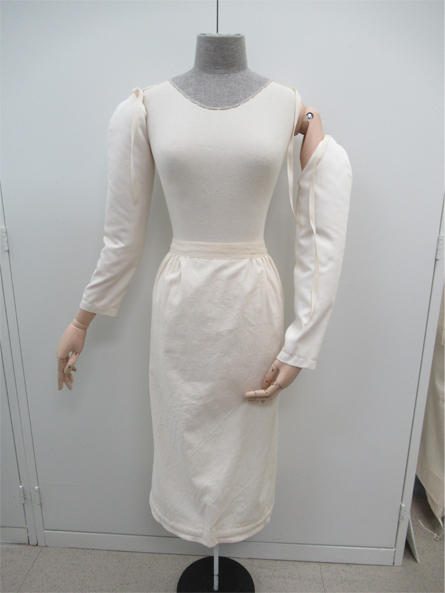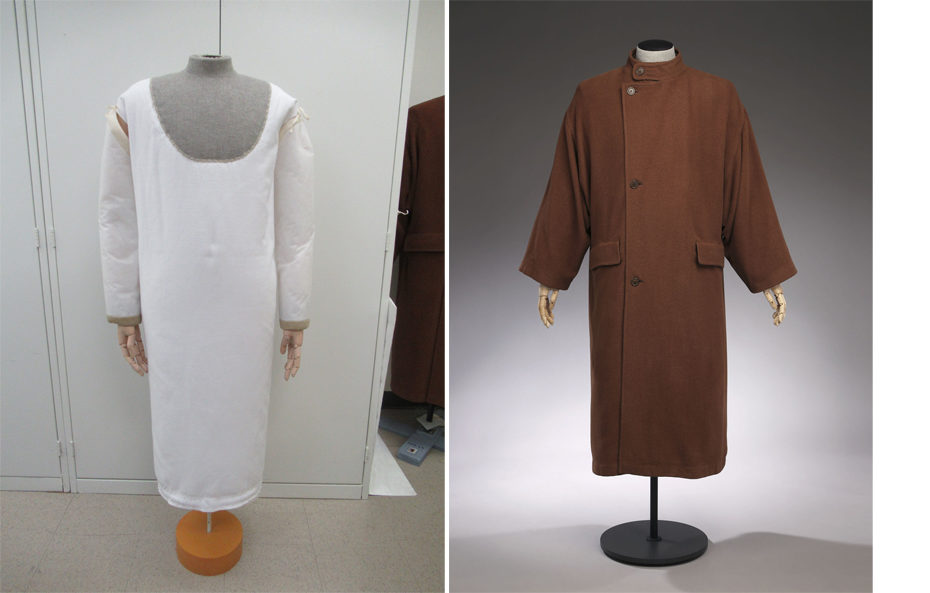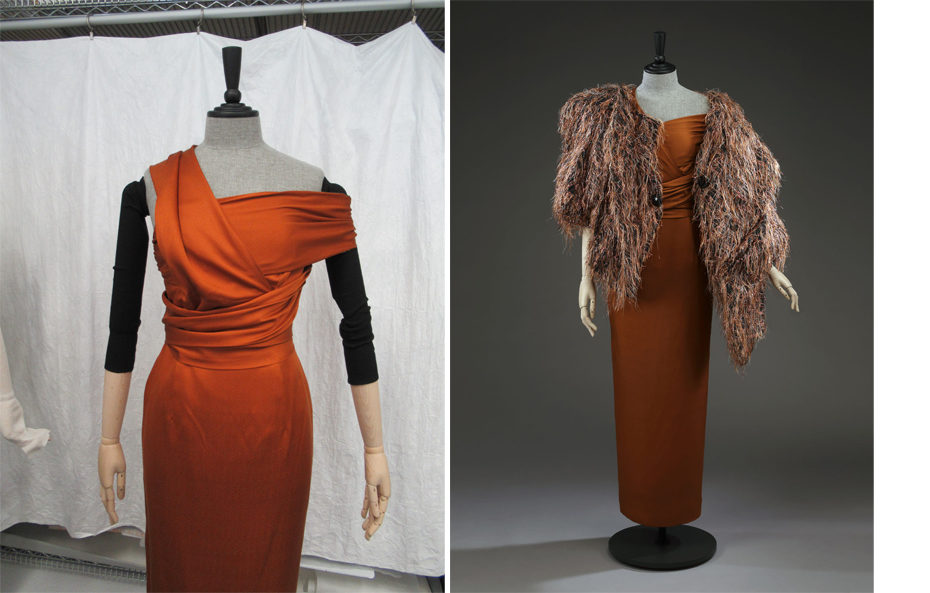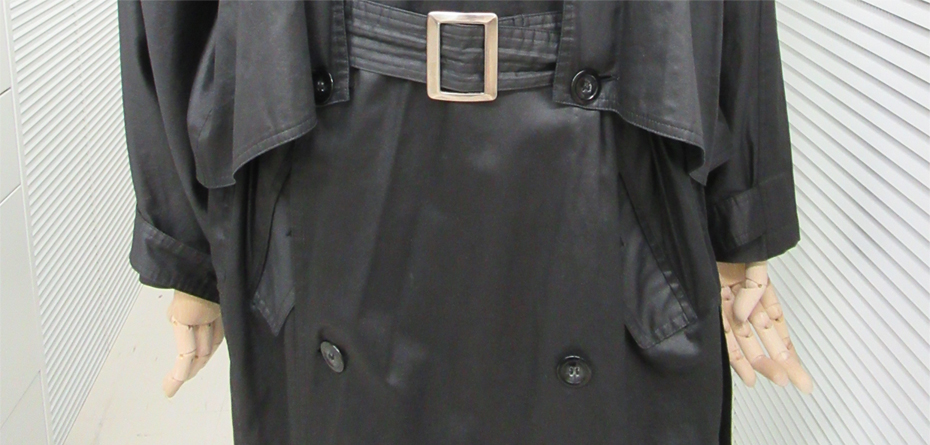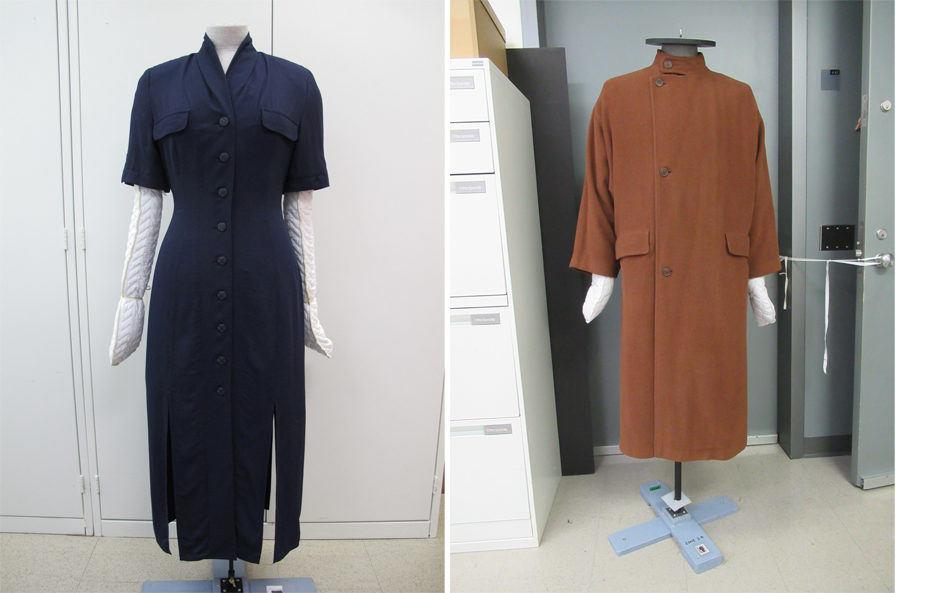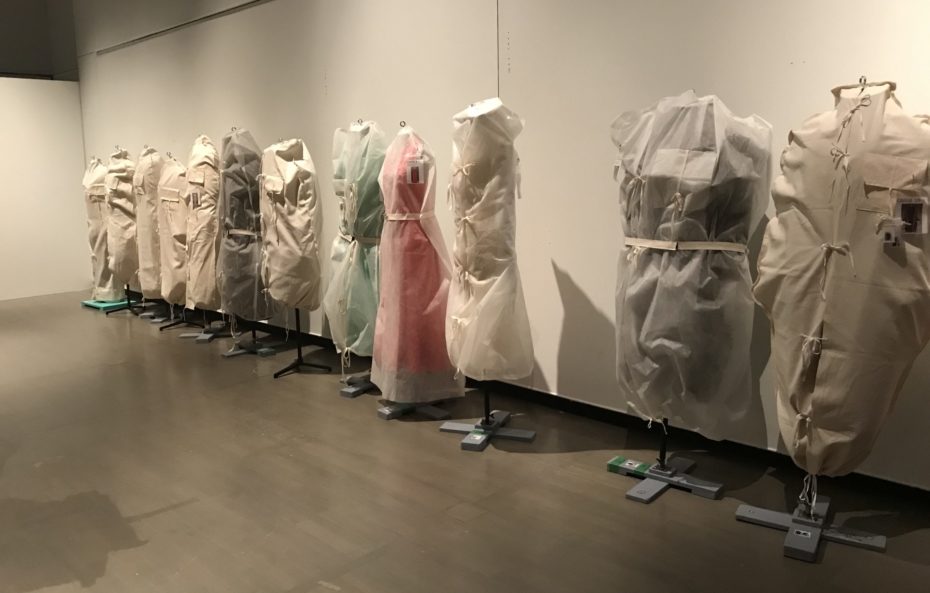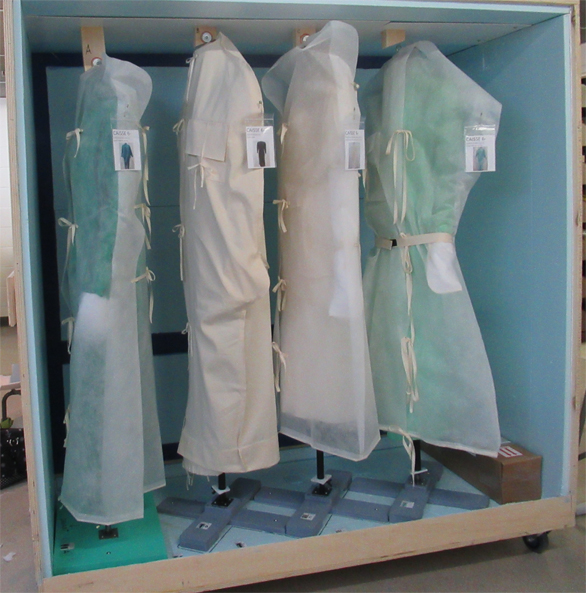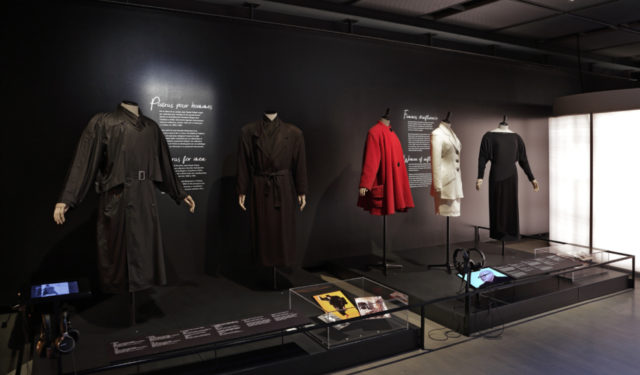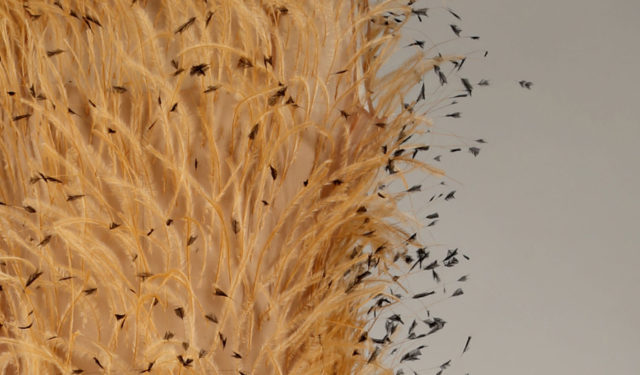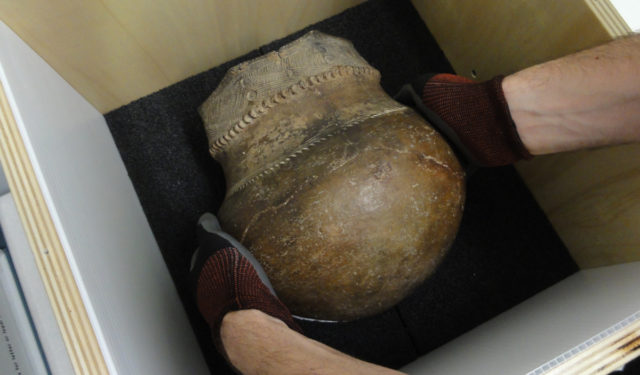Mounting and Crating: A Real Feat of Arms!
See how mannequins with articulated wooden arms were prepared for shipping by truck.
April 21, 2020
The new mannequins with articulated wooden arms used for the exhibition Jean-Claude Poitras: Fashion and Inspiration – presented first at the Musée de la civilisation and subsequently at the McCord Museum – required us to adapt our mounting and crating techniques to ensure that the garments would not be damaged during handling, when travelling between the two museums or, of course, while actually on display.
You missed the first part of the story?
Here is the link to Mannequins that measure up!
One might think that using articulated wooden arms would save time, since it eliminates the stage of fabricating custom-made arms. But that’s so not true! Extra precautions must be taken to make sure the clothes are not compromised in any way. For example, during the exhibition period, which lasts several months, the skeletal structure of the arms might provoke some deformation in the sleeves. Also, the clothing fabrics could be damaged by emissions from the wood or the surface varnish. To counter these risks, we made additional arm coverings out of fabric-covered polyester batting, varying them according to the type of sleeve to be displayed. These elements are removable to allow access to the hardware that determines and holds in place the position of the arms.
For garments made of heavier fabric, such as jackets and coats, we varied the amount of batting in the textile elements to arrive at the precise volume that would best support the sleeves while allowing them to fall naturally.
For garments made of more flowing or transparent fabrics, the wooden arms were covered in a thin layer of batting designed to attenuate the skeletal shape without adding too much volume. Because of the transparency, the material used to cover the batting was in a beige tone similar to that of the wood..
For this dress-and-bolero ensemble, we made simple jersey-knit tubes. The goal was to make sure the very light fabric of the bolero did not come into direct contact with the wood. To keep the tubes as visually unobtrusive as possible, we used a jersey-knit in the same colour as the bolero lining.
Once the mounting was completed, we embarked on the task of crating the entire contents of the exhibition for transport to Quebec City. Since most of the clothes were in excellent condition, our conservation team determined that the garments could remain on the mannequins during transport, which would avoid the excessive handling involved in mounting and dismounting the clothes several times.
But if the clothes were to be shipped on their mannequins, how could we ensure that they would not be damaged by the wooden arms? The fingers were placed facing outwards.
To smooth out the shape of the arms and prevent the clothes touching the wood, we custom-made large padded-cotton mittens to cover the exposed sections of the arms.
The arms were positioned vertically, flush with the body, to reduce the volume of each mannequin. Each was also provided with its own custom-made slipcover in either cotton or non-woven polyester, secured where necessary with cotton-ribbon belts. This covering and belting of the mannequins minimized the movement of the arms during road transport, further protecting the garments.
One by one, the mannequins were placed in their crates and secured at the base and neck to ensure they remained stable during the trip from one museum to the other.
Mission accomplished! It was just a question of being well armed…


